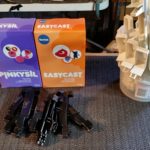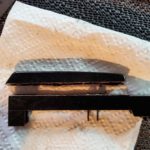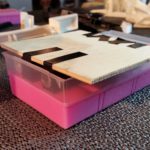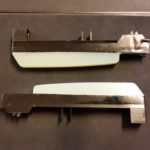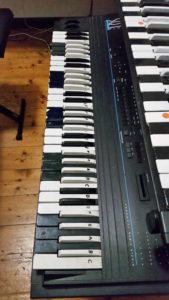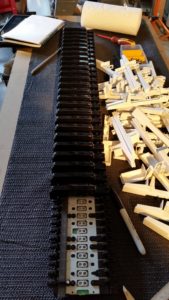It was immediately obvious that painting over the top of re-shaped keys was just not going to be good enough. The existing keyboard I had been shown was functional but looked like a mess. These keyboards would probably see heavy use by students so I needed something very durable that also felt natural. It’s hard enough learning a new way of playing a keyed instrument without the distraction of paint coming off under your fingers.
I decided to re-cast the tops of the raised keys (previously the sharps and flats) in solid white resin. This increases the mass of the key a little, but that is not a drawback. The more expensive Korgs that use this keybed have weights installed to give them a better feel and even out the stronger spring response of the shorter keys. The extra weight of my solid tops is improving the keyboard!

